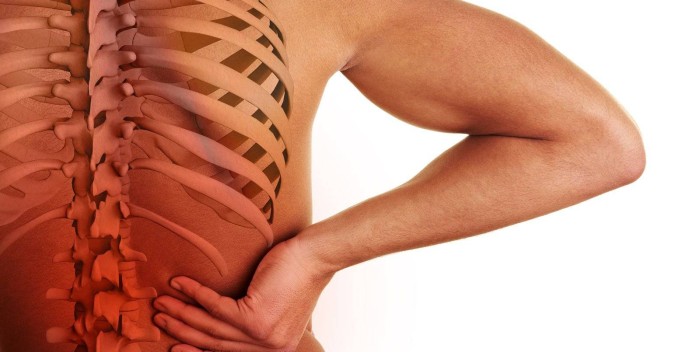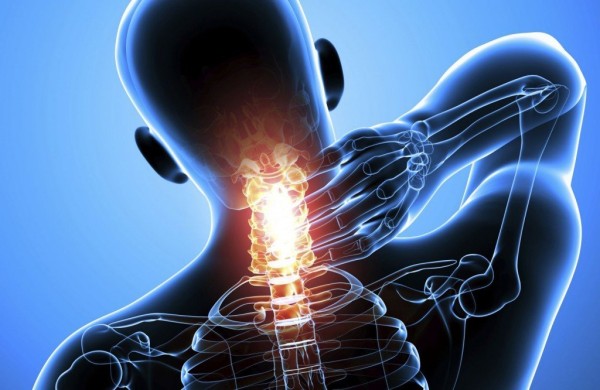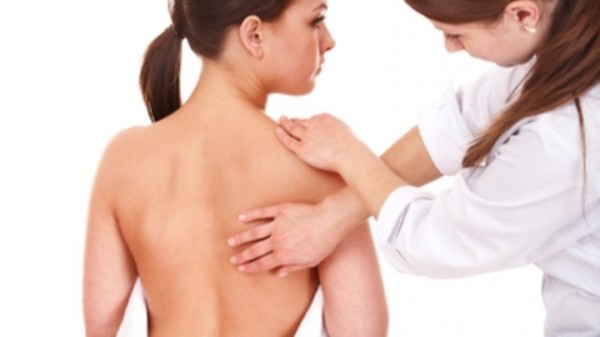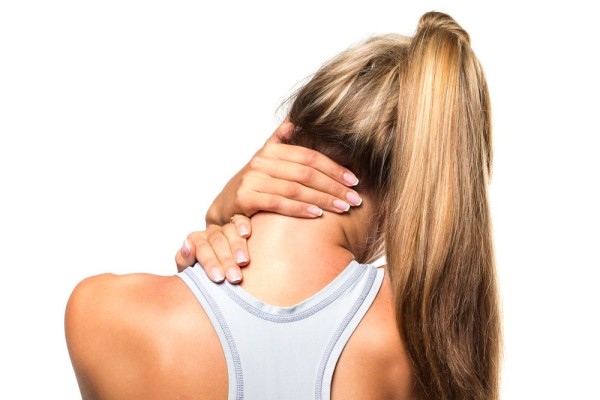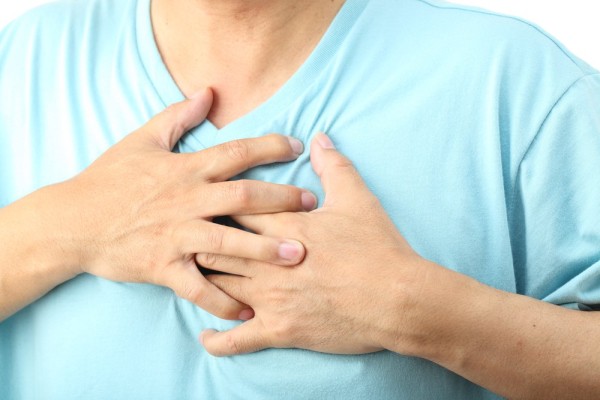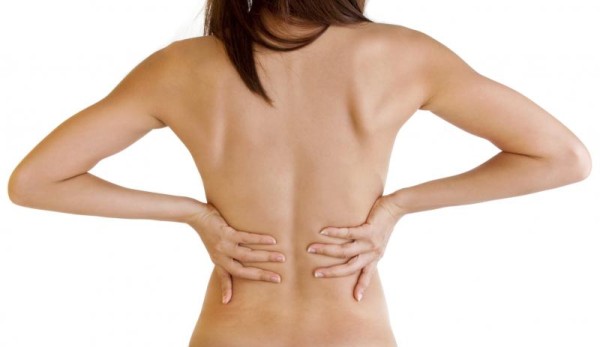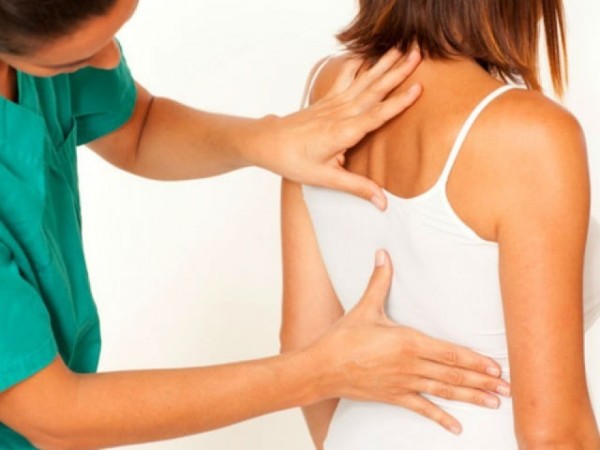Chondrosis: symptoms, causes, treatment
Chondrosis is a pathological process occurring in the spine, accompanied by degenerative changes in the intervertebral discs - cartilage tissue is converted into bone. In this case, the vertebral nerve endings are pinched. There are cervical, thoracic and lumbar types of chondrosis. Articular chondrosis, which affects the joints of the knee, elbows and ankle bends, is classified separately. The most common are chondrosis of the cervical and lumbar spine, affecting mainly women 40-60 years old.
Content
The causes of chondrosis
The main cause of the development of the disease is considered to be a metabolic disorder and vascular pathology. Chondrosis can be provoked by heavy weight, which increases the load on the spine, diabetes mellitus and prolonged hypertension.
The pathology also affects the muscle tissues of the spine, causing their constant tension and pinching. This is due to the long-term presence of the skeletal and muscular apparatus in one position (during sedentary work, sleeping at night in an uncomfortable position, etc.). Increased muscle tone can also be caused by exposure to cold temperatures (cold shower or sudden immersion in water), neuropsychological stress (stressful situations, excitement, excessive emotionality, character traits).
Chondrous degeneration of the vertebral discs can develop after back injuries or surgery. Undoubtedly, age-related changes in the body also have a great influence on the progression of pathology.
Chondrosis symptoms
The affected discs lose their functionality, the destruction of cartilaginous tissue leads to compression of the vertebral plates and pinching of the nerve roots, which is manifested by severe pain. The mobility of the vertebral links and depreciation are impaired, leading to their injury and inflammation of the soft tissues. First of all, vertebral chondrosis is manifested by severe pain, aggravated by movement, a feeling of stiffness and heaviness in the neck or lower back, especially in the morning.
The main symptoms of pathology of the spinal column:
- limitation of motor functions of the body;
- pain in the spine and muscles;
- painful sensations that radiate to the internal organs, to the adjacent areas (to the head, chest, pelvis, legs);
- severe headaches (migraine), dizziness, nausea, hearing and vision impairment (with damage to the cervical vertebrae);
- pain in the chest area, radiating to the shoulders and arms; shortness of breath, heart failure (chest chondrosis);
- pain in the lumbar region, in the abdomen, in the hips, projecting onto the legs, impaired genitourinary functions and bowel activity;
- discomfort and pain in the body during sleep, in a sitting position, with long walking;
- loss of sensitivity in the hands and feet, numbness and dull pain in the fingers;
- deterioration in the quality of life due to limited mobility and pain in the affected areas of the spine.
The manifestation of symptoms depends on the area of \ u200b \ u200bthe spinal lesion, and can manifest itself separately or in combination.
Cervical chondrosis
Chondrosis of the spine in the neck area is expressed in a change in the shape and structure of the vertebral discs in this area. The cervical vertebral discs adhere tightly enough to each other, therefore, degenerative changes in even one vertebra provoke deformation of all other discs and the entire spinal column. The disease can proceed in an acute or chronic form with stages of remission and exacerbation. With timely treatment started, you can get rid of the pathology.
Cervical chondrosis is manifested by the following symptoms:
- headaches of various kinds - acute, dull, exhausting, aggravated by movement of the head or bright light, causing nausea;
- heaviness in the neck;
- neck pain radiating to the shoulders and arms;
- darkening of the eyes, tinnitus, and dizziness;
- feeling of discomfort and stiffness when lying down, the patient cannot find a comfortable position for himself;
- sleep disturbance;
- a feeling of stiffness in the occipital region;
- deterioration of visual and auditory functions;
- when turning the head, a characteristic crunch in the neck;
- bouts of hypertension;
- severe fatigue and drowsiness due to insufficient supply of blood and oxygen to the brain.
The appearance of the above symptoms requires urgent diagnosis and treatment.
As a rule, chondrosis affects the most mobile parts of the spine, which are subject to excessive stress. The development of chondrosis of the cervical spine is preceded by various diseases and negative factors:
- violation of blood circulation;
- curvature of the spine (scoliosis, hunchback, etc.);
- cervical deformities;
- overweight;
- excessive physical activity or lifting heavy objects;
- sedentary lifestyle and work;
- hereditary changes in the structure of the spine;
- neck injury in accidents, bruises, falls, during birth;
- impaired metabolism.
Thoracic chondrosis
Chondrosis of the thoracic region is manifested primarily by pain syndrome due to compression of nerve fibers. The intervertebral discs lose their elasticity due to the destruction of the cartilaginous tissue and flatten. Lesions affect the muscle tissues connecting the thoracic vertebrae, the blood supply and nutrition of the tissues of the vertebral discs. Constant compression of the nerves can cause loss of nervous sensitivity of internal organs (innervation) and their failure, the formation of intervertebral hernias.
The development of pathology is preceded by the following factors:
- metabolic disease;
- body hut;
- diseases of the cardiovascular system;
- lack of physical activity;
- constant stress on the back;
- various scoliosis and improper posture;
- spinal injury;
- age-related changes.
Symptoms of the pathology of the thoracic spine:
- back pain, in the shoulder blades, radiating to the hands;
- pain in the heart and chest;
- violation of respiratory activity, shortness of breath, choking;
- pain, aggravated by inhalation-exhalation.
Chondrosis of the spine
Chondrosis of the spine in the lumbar-sacral region occurs mainly due to heavy loads on this part of the body due to hard work, intense sports training, long sitting in one place. In such situations, the lumbar muscles and cartilage tissues are in constant tension, wear out quickly, and their deformation and destruction begins.
The reasons for the development of pathology are in many ways similar to the general reasons for the development of chondrosis of the spinal column:
- violation of the shape of the spine with flat feet and wearing uncomfortable shoes (high heels, wrong shoe, etc.);
- load on the lower back when sitting for a long time (professional costs, limited mobility due to various diseases, disability);
- intense sports loads;
- heavy physical labor associated with carrying weights or working in a bent position;
- excess body weight;
- emotional and mental stress;
- sleeping on an uncomfortable bed (very soft "sinking" mattresses, high pillows, etc.);
- violation of the metabolic process.
Lumbar chondrosis is manifested by the following symptoms :
- severe pain in the lower back, passing into the pelvis, sacrum, tailbone, lower limbs;
- calf cramps and dull pain in the legs;
- loss of sensitivity in the toes;
- weakness of the muscular system in the lower extremities;
- violation of the genitourinary system;
- sudden shooting pains in the lower back when bending, coughing, sudden movements, lifting heavy objects;
- limitation of mobility, especially in the morning;
- curvature of the spine in the spine.
Treatment of chondrosis of the lumbosacral spine consists in taking medicines that relieve symptoms (pain relievers, anti-inflammatory, diuretics to relieve puffiness); as supporting agents and to accelerate the regeneration of damaged tissues - vitamin complexes, nicotinic acid.
To reduce the load on the lower back, the patient is prescribed walking with crutches or canes, procedures for stretching the spine. With severe pain, novocaine blockade is performed in the vertebral region.
As physiotherapy, ultrasound, electrophoresis, laser irradiation, massage, swimming, manual therapy, acupuncture are prescribed. Removal of hernias and protrusions, strengthening of the damaged area of the spine is carried out through surgical intervention. As a rule, patients with lumbar chondrosis are prescribed bed rest.
Chondrosis treatment
Treatment of spinal chondrosis requires a long time and a lot of effort. A feature of pathologies of the musculoskeletal system is that it is impossible to finally recover from the disease. However, timely started therapy will make it possible to stop the process of destruction of the vertebral discs, get rid of unwanted symptoms. The terms of conservative treatment are 1-3 months, and after the operation, the rehabilitation period lasts up to 12 months.
Chondrosis is treated with several methods:
- drug therapy;
- surgical intervention;
- physiotherapy procedures (hardware procedures, special gymnastic exercises, massage, manual therapy, therapeutic baths, swimming);
- diet therapy;
- preventive measures to prevent the re-development of chondrosis.
Treatment activities are carried out in the following areas:
- relieving the patient from pain;
- removal of muscle and nerve spasms;
- release of pinched nerves and regeneration of their vital functions;
- removal of tissue swelling and elimination of inflammatory processes;
- fight against the very cause of the disease.
Drug treatment consists in prescribing the following medicines below:
- antispasmodics and pain relievers;
- NSAIDs;
- muscle relaxants that reduce muscle tone (Baclofen, Mydocalm);
- means for restoring the cartilage tissue of vertebral discs (chondroprotectors) - Rumalon, Chondroxide, Mucosat, Teraflex, etc.;
- drugs that strengthen and improve metabolism - vitamins, minerals;
- sedatives;
- to improve cerebral circulation - warming ointments and gels, vasodilators, antispasmodics in the form of tablets and injections.
In some cases, the initial stages of treatment are accompanied by an increase in the intensity of pain. This is due to the fact that muscle and nerve fibers, which have been in a forced inactivity for a long time, begin to recover. To relieve pain, the use of physiotherapeutic procedures, gymnastics and pain relievers is very effective.
Gymnastic exercises are aimed at correcting posture, strengthening the muscular system that holds the spine and prevents compression of nerve fibers. Physiotherapy exercises are carried out with the use of special simulators, exercises to strengthen the joints. Exercises help to normalize blood microcirculation in muscles, improve metabolism and supply of nutrients to the vertebrae and discs, stretch the spine, increasing the gap between them, strengthen the muscle corset, which allows to evenly distribute the load on the spinal column.
Physiotherapy procedures are in the impact on the vertebral areas of low-frequency electric waves, magnetotherapy, treatment with ultrasound and laser radiation. Such procedures have an anti-inflammatory effect, relieve pain syndrome, and restore tissue well after surgery. Muscle pain and tension are relieved with massage, which also improves blood flow to the organs. To relieve pain during exacerbation of chronic chondrosis, restore displaced vertebrae and release a pinched nerve, manual therapy is prescribed. To restore the correct posture, straighten the deformed vertebral discs, a spinal traction is used.
Prevention of chondrosis
Prevention of chondrosis pathology of the spine consists in a set of measures to prevent the development of the disease or exacerbation of the chronic form:
- an active lifestyle that contributes to the normalization of metabolic processes and the prevention of stagnant processes;
- regular physical exercises aimed at strengthening the muscular corset of the spine and developing flexibility;
- avoid excessive physical exertion, weight lifting;
- use an orthopedic mattress for sleeping;
- monitor body weight;
- follow the principles of healthy eating;
- during sedentary work, do special gymnastics for the neck and lower back every hour, during the lunch break, take walks in the air;
- normalize metabolism;
- swimming lessons are very useful.
Chondrosis requires complex treatment using all methods of therapy. Compliance with all medical recommendations, competent treatment and patient patience guarantee a favorable success in the treatment of the disease.
